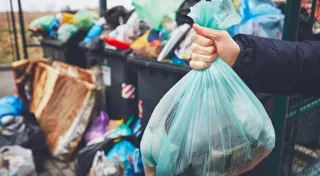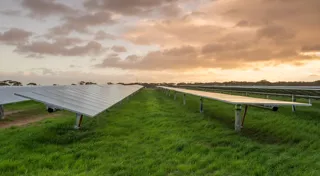Housing Plus and CEFC to deliver energy efficient homes for low income families in regional NSW
9 May 2019
Low income families in regional New South Wales can look forward to new homes, lower energy bills and environmental benefits as part of a landmark agreement between the CEFC and Housing Plus, one of the state’s largest regional community housing providers.
The CEFC is investing up to $95 million to support Housing Plus develop 220 new highly energy efficient community housing dwellings in Bathurst, Dubbo and Orange.* The Housing Plus program of works also includes retrofits of rooftop solar and energy efficient technologies across some of its existing properties, to extend the benefits of the CEFC finance to even more low income families.
Housing Plus, a Tier 1 regional community housing provider, has secured the CEFC finance as part of its successful bid for inclusion in the second funding round offered by the NSW Social and Affordable Housing Fund (SAHF).
Housing Plus will draw on the CEFC finance to deliver 47 new dwellings in Bathurst, 87 in Dubbo and 86 in Orange over the next 3 years. The homes, which will boast rooftop solar and energy efficiency technologies, will be built to a minimum 7-Star National Housing Energy Rating System (NatHERS) standard. This is effectively a 40 per cent improvement on the energy efficiency achieved in homes built to the current minimum standard.
CEFC CEO Ian Learmonth said: “We are delighted to work with Housing Plus on this exciting project, which will bring the benefits of clean energy to low income families in regional New South Wales. This is about helping families cut their energy costs while also benefiting the environment.
“Once families settle in these new homes, the clean energy benefits will speak for themselves, with increased levels of comfort requiring significantly less energy for day-to-day living. These homes, because they require less energy, will also help reduce the emissions impact of our built environment.
“We’re also pleased to be delivering another substantial investment in regional New South Wales, where we have already helped finance a number of solar and wind projects, as well as a host of small-scale clean energy investments by farmers, businesses and community organisations. These diverse investments are a great demonstration of the way proven clean energy technologies can deliver benefits right across the economy.”
A number of community housing and welfare organisations have called for a 7-star NatHERS equivalent requirement in residential buildings as part of efforts to reduce energy costs for low income families, as well as improve residential liveability and sustainability. The organisations have also supported energy efficiency changes to the National Construction Code to take effect from 2022.
Housing Plus CEO David Fisher said: “We are delighted to be delivering one of the largest social and affordable housing programs the Central West region has seen for many years. This will support the local community and growth in the economy for years to come as well as create jobs in construction and services in the short term.”
“A key feature of the properties is the provision of energy efficient measures to reduce the running costs of these homes into the future. As well as providing families with secure, affordable housing, Housing Plus will link tenants and household members with local services to help them work towards greater independence. There is a particular focus on supporting vulnerable older women.”
CEFC Community Housing Sector Lead Victoria Adams said the CEFC and Housing Plus would work together to identify energy efficiency opportunities on a site-by-site basis. The types of technology that may be used to reach the NatHERS target include rooftop solar, battery installations, heat pumps, additional insulation, double glazing, smart meters, LED lighting and energy efficient white goods.
“We see this finance as having extensive benefits across the Housing Plus portfolio, as well as the broader community housing sector,” Ms Adams said.
“Housing Plus will also expand its existing education program to help its tenants adopt more energy efficient lifestyles. We will share the insights from this project with other community housing providers, through the Housing Alliance and CHIA (NSW), to encourage the more widespread adoption of sustainable housing practices.
“While this is central for the social and affordable housing sector, it also offers substantial benefits for the broader residential construction sector.”
The CEFC has previously provided SGCH with $170 million to finance the development of approximately 500 energy efficient homes in Sydney, as part of its long-standing commitment to the social and affordable housing sector.
The finance for Housing Plus is part of the CEFC’s Sustainable Cities Investment Program, which invests in clean energy initiatives in Australian cities. The Housing Plus homes will be constructed by regional developers over the next three years.
Learn more about how the CEFC is investing in Australia’s community housing to help families cut their energy costs and carbon emissions.
*CEFC finance of $112.5 million was repaid in April 2024.
ABOUT HOUSING PLUS
Housing Plus is a leading outcomes-focused community services provider who has been operating in regional NSW for over 30 years. We are a Tier 1 Registered Community Housing Provider, registered NDIS provider (Specialist Disability Accommodation and Home Modifications), accredited Specialist Homeless Services (SHS) provider and recognised leader within the domestic and family violence (DFV) sector in NSW. Housing Plus works across the provision of accommodation (crisis, transitional, social, affordable, private and disability) and community services delivery to ensure that our tenants and clients are able to live in safety, sustain their tenancies and have access to services that empower them to reach their full potential, including exiting social housing into the private rental market or homeownership.
Media release, 2019




